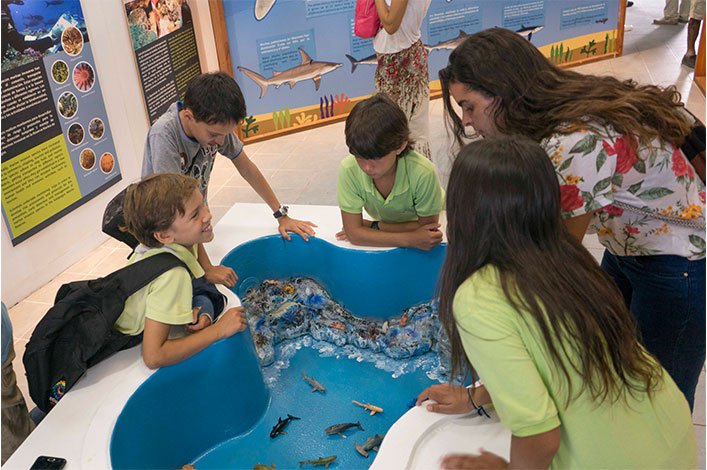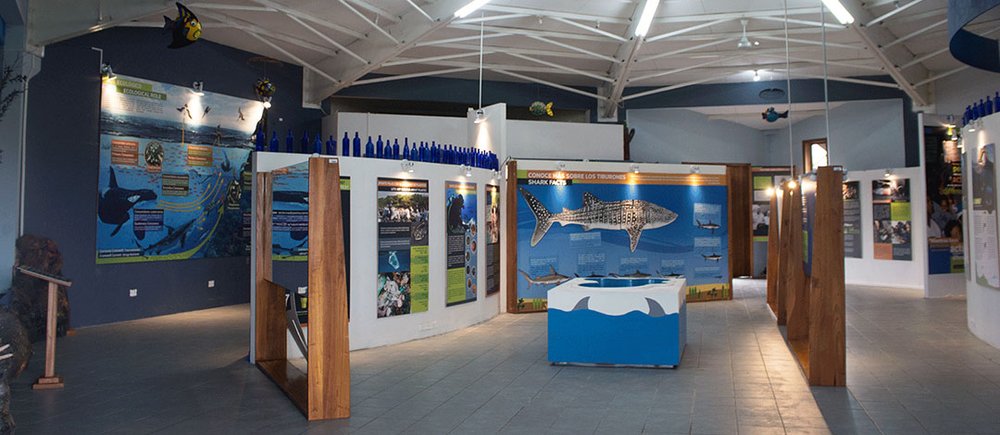
A new exhibit at the Charles Darwin Research Station in the Van Straelen Interpretation Center has been re-opened with the “Marine World” themed display after 18 years. Thanks to the support of Save Our Seas Foundation, we painted the walls, designed new information panels, made artifacts of different materials and re-designed the floor space to carry out our Shark Ambassadors Program and other educational activities with the local community. World Oceans Day was the chosen date to open this new space. Local authorities, students and all our staff members joined us to launch the new exhibition, and young local artists played music at the opening.
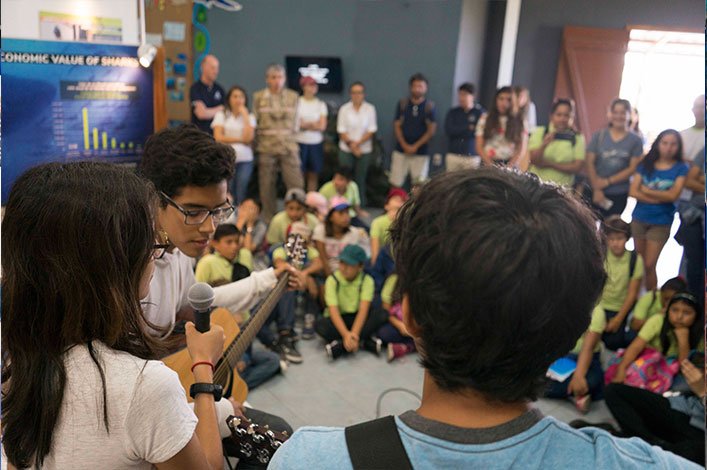
During 2016, we launched the Protect the Fins and the Ocean Wins campaign with the aim of promoting Galapagos as an example of sustainable co-existence between humans and sharks. During this campaign, we worked with more than 1500 kids that filled a chart during the workshops with topics they wanted to learn about sharks and answered questions that helped us to evaluate their perceptions towards these animals. The new exhibition answers the students’ questions with information that includes prehistoric sharks, mangroves as a nursery for juvenile sharks, ecologic role, anatomy and senses, threats for sharks’ conservation, deep sea sharks and the scientific methodologies used in the Galapagos to study these species. We have an additional space to raise awareness about ocean pollution with plastics, and to offer recommendations of how to change our behaviors towards this global issue too.
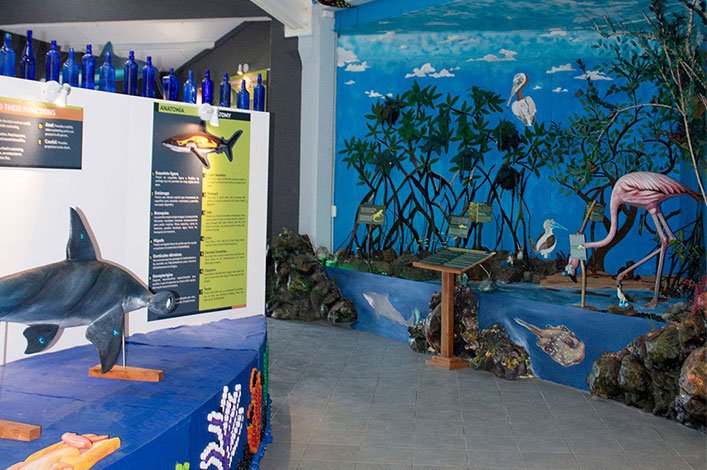
As part of our Marine Education Project in 2017, we develop the Shark Ambassadors Program that uses experience as a tool to learn more about sharks and marine ecosystems. During the program, we developed different beach clean-ups where we collected marine debris that was reused in the exhibition. During the first half of 2018, a group of eight Shark Ambassadors helped paint the murals of the exhibition. Using plastic caps found in beach clean-ups, we decorated the bulletin board and the shark anatomy side.
Our volunteers painted a mural with the most representative shark species of the Galapagos and gave a marine background to our reading corner and classroom. We used recycled wood pallets to build the furniture and glass bottles collected from the recycling center of Santa Cruz Island gave an additional blue decoration. The Galapagos National Park donated furniture that was very useful for didactic activities and to display panels. Thanks to additional funds, and CDF’s staff members support, the old cables were changed, the panels were placed and now we have a new handicapped ramp and a new fence.
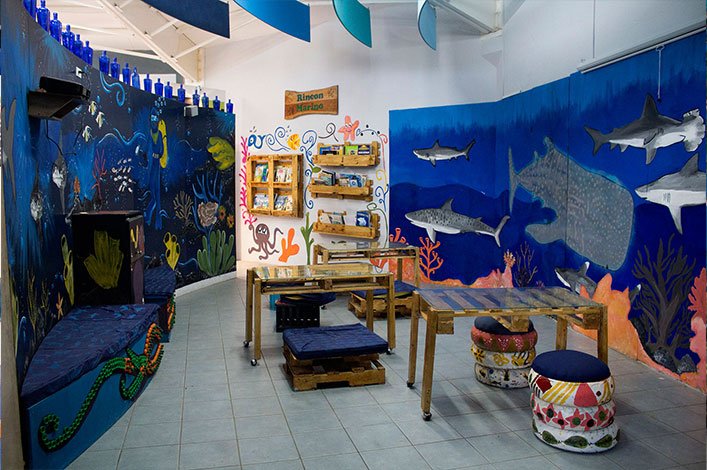
The day after the launch event, the Charles Darwin Research Station Open House took place receiving more than 500 people from the local community and tourists. In this occasion, we used the new exhibition to explain the vulnerability of sharks and to show scientific materials used to study sharks in the Islands. Our shark characters accompanied us transmitting key information to the people who visited us.
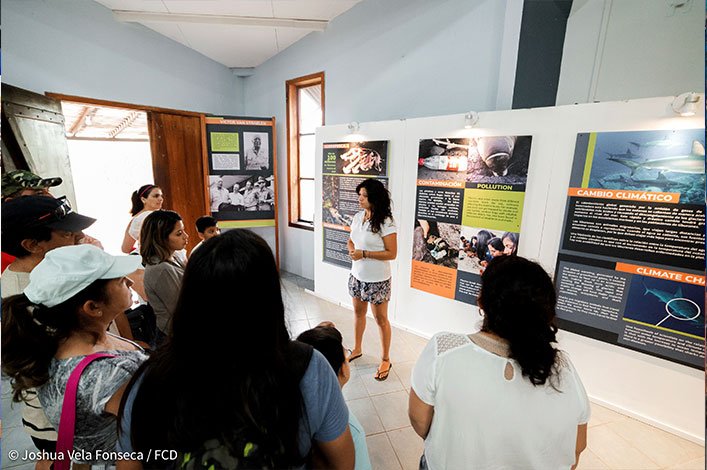
During this year, we have different activities prepared for students which include the continuation of the Shark Ambassadors Program for the second consecutive year and the new Marine Mornings Program to develop marine activities with local teachers and students. We will use art as a tool to teach about conservation and field activities to learn more about this beautiful Archipelago. The Interpretation Center has been renewed to become a space to develop activities, and also to receive groups that want to learn more about oceans. Special thanks to our donors, the Galapagos National Park and collaborators that made this exhibition possible!
